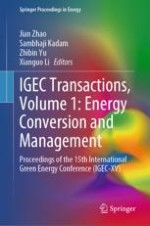This book is the first volume of the proceedings of the 15th International Green Energy Conference (IGEC) held in Glasgow, UK from 10-13 July 2023. This meeting is the latest in a multi-disciplinary international conference series on the use of energy with no or reduced environmental, social, and economic impacts. The conference provided a platform for sharing new technical information, disseminating high-quality research results, presenting the latest developments in energy and environment, and debating the shaping of future directions and priorities for sustainable development and energy security.
This conference proceedings is of particular value and interest to researchers, scientists, engineers, and practitioners from relevant fields of energy and environment, from policy-making and technical development to management and marketing.
